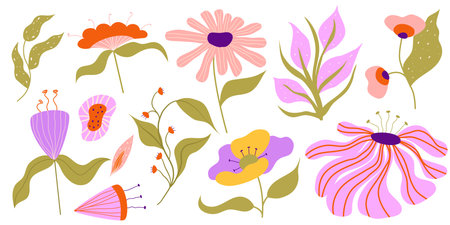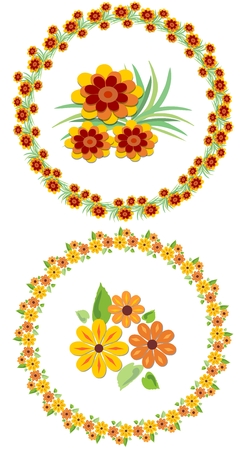Introduction to the Cottage Garden Aesthetic
Step into the enchanting world of the classic English cottage garden—a place where nature and nurture walk hand in hand, much like a parent and child tending their favourite corner of earth together. The cottage garden is cherished throughout Britain not only for its vibrant beauty but also for its rich history rooted in rural tradition. Dating back to the 16th century, these gardens were originally practical plots, bursting with a joyful jumble of flowers, herbs, fruit trees, and vegetables. Over time, they evolved into a beloved symbol of British culture, embodying warmth, comfort, and informal elegance. Key features include winding paths lined with fragrant blooms, charming picket fences, and an abundance of pollinator-friendly plants that invite butterflies and bees to visit. The true heart of a cottage garden lies in its relaxed planting style—layers of colour and texture that evoke both nostalgia and discovery. Whether you’re sharing stories among foxgloves or teaching little ones the names of old-fashioned roses, every inch of a cottage garden offers inspiration and connection between generations.
2. Roses – The Heart of the Cottage Garden
When we think of a classic English cottage garden, fragrant and blousy roses immediately spring to mind. Roses have been at the heart of British gardens for centuries, symbolising romance, tradition, and the gentle wildness that defines cottage planting. From winding pathways to climbing trellises, these beautiful blooms provide both structure and softness—making them utterly essential for any authentic cottage display.
Traditional English Rose Varieties
The magic of a true cottage garden lies in its diversity and history. Here are some beloved traditional English rose varieties that have graced gardens across the country:
| Rose Variety | Key Features | Best For |
|---|---|---|
| Rosa ‘Gertrude Jekyll’ | Classic pink blooms, rich old rose fragrance | Borders, cutting gardens |
| Rosa ‘The Generous Gardener’ | Pale pink, climbing habit, repeat flowering | Arches, fences, pergolas |
| Rosa ‘Munstead Wood’ | Deep crimson petals, strong scent | Cottage beds, containers |
| Rosa ‘Queen of Sweden’ | Cupped apricot-pink flowers, upright growth | Mixed borders, formal beds |
| Rosa ‘William Shakespeare 2000’ | Velvety crimson blooms, nostalgic look | Traditional schemes, mixed plantings |
The Significance of Roses in Cottage Gardens
For generations, roses have played an important part in British family traditions—children learning to prune with grandparents on misty mornings or picking petals for homemade rosewater. Their symbolism runs deep: they represent enduring love and resilience through all seasons. Planting roses is often a shared experience between parent and child—a living story unfolding year after year.
Tips for Cultivating a Fragrant and Bountiful Rose Patch
- Select the right spot: Most roses thrive in full sun with at least six hours of light daily.
- Nourish your soil: Enrich with well-rotted manure or compost before planting—roses love fertile ground.
- Water wisely: Deep watering once or twice a week encourages strong root systems. Avoid splashing leaves to prevent disease.
- Prune with purpose: In late winter or early spring, remove dead or weak stems to promote healthy growth and abundant blooms.
- Add companions: Underplant with lavender or catmint to deter pests and add a delightful sensory layer for children exploring the garden’s scents and textures.
- Savour the process: Invite little hands to help deadhead spent blooms—it’s a gentle way to nurture both plants and family connections.
A Family Tradition Rooted in Nature’s Beauty
The humble rose remains the heartbeat of every classic cottage garden—a living legacy passed down through generations. By choosing time-honoured varieties and tending them together as a family, you can cultivate not just a vibrant patchwork of colour and fragrance, but also cherished memories that blossom year after year.

3. Quintessential Perennials for Year-Round Colour
No classic cottage garden would be complete without the timeless beauty of perennial favourites, cherished in British gardens for generations. Among the most beloved are foxgloves, delphiniums, and lupins—plants that not only add height and drama but also bring a sense of nostalgia and magic to garden borders.
Foxgloves: The Enchanting Spires
Foxgloves (Digitalis purpurea) are instantly recognisable by their tall, elegant spikes of tubular flowers, which sway gently in the breeze and attract bees and other pollinators. These biennials or short-lived perennials thrive in partial shade, making them perfect for the dappled light often found in cottage gardens beneath trees or along north-facing walls. Sow seeds directly where you want them to grow, as they dislike being moved once established. Foxgloves will happily self-seed, creating natural drifts that feel delightfully unplanned—just as a cottage garden should.
Delphiniums: Towering Jewels
Delphiniums are true showstoppers with their towering spires of blue, purple, pink, or white blooms. Their upright habit brings structure and vertical interest, while their vibrant hues provide a burst of colour during early summer. For best results, plant delphiniums in rich, well-drained soil in a sunny spot sheltered from strong winds. Stake them early to support their impressive height and deadhead spent blooms to encourage a second flush. British gardeners adore these stately plants not just for their beauty but also for their ability to evoke the romance of Victorian gardens.
Lupins: Bold and Beautiful
Lupins are another must-have for any cottage-style border, offering bold flower spikes in every shade imaginable—from soft pastels to striking brights. These hardy perennials thrive in full sun and prefer slightly acidic soil that is well-drained. Plant lupins en masse for the most dramatic effect and enjoy watching bees dart amongst the densely packed flowers. Cut back faded stems after flowering to encourage new growth and keep your borders looking fresh throughout the season.
Why Perennials Are Cottage Garden Favourites
The enduring appeal of foxgloves, delphiniums, and lupins lies in their reliable blooms and ability to return year after year with minimal fuss—a true blessing for busy families who love spending time outdoors together. Their presence weaves together stories of childhood wonder and shared discovery as little hands marvel at tall flower spires teeming with life. By choosing these quintessential perennials, you’re not just planting flowers; you’re nurturing memories that will blossom season after season in your very own British cottage garden.
4. Herbs and Edibles Among the Blooms
In a classic English cottage garden, practicality is as cherished as beauty. Amongst the cheerful drifts of foxgloves and hollyhocks, you’ll often discover kitchen herbs quietly thriving. Plants such as rosemary, chives, and mint are woven seamlessly among the ornamental flowers, adding layers of fragrance and utility to the borders.
Herbs in the cottage garden aren’t just for show—they’re there for snipping into summer salads or brewing a comforting pot of tea after a rainy afternoon. Their aromatic leaves release delightful scents as you brush past, inviting children to touch and sniff, turning every stroll through the garden into an interactive adventure.
Common Cottage Garden Herbs
| Herb | Position in Garden | Culinary Use | Aromatic Qualities |
|---|---|---|---|
| Rosemary | Sunny edges or by paths | Roasts, bread, herbal butters | Piney, invigorating scent |
| Chives | Mixed borders, near veg beds | Salads, soups, garnishes | Mild onion aroma; edible purple blooms |
| Mint | Pots (to contain spread), shady corners | Teas, desserts, new potatoes | Fresh, cooling scent; attracts pollinators |
Growing herbs alongside flowering perennials not only saves space but also encourages pollinators and deters pests naturally. Children love discovering how these familiar flavours grow right outside their door—and picking a sprig of mint or rosemary can become a simple ritual before mealtime. With their blend of usefulness and sensory delight, kitchen herbs are truly essential in any classic cottage garden.
5. Climbing Plants for Height and Wild Beauty
Every classic British cottage garden is brought to life by the enchanting presence of climbing plants. These vertical wonders—like clematis, honeysuckle, and wisteria—not only add height but also infuse gardens with a sense of wild romance and lush abundance.
Clematis: The Versatile Showstopper
Clematis is beloved for its versatility and spectacular blooms, ranging from delicate pastels to vibrant purples. Whether scrambling over arches or weaving through shrubs, it brings an effortless elegance to any corner of your garden. Children will love watching the flowers change through the seasons, offering endless opportunities for curious little hands to explore nature’s artistry.
Honeysuckle: Sweet Scent and Wildlife Appeal
Honeysuckle, with its sweet fragrance and tubular blossoms, not only graces walls and fences but also invites bees and butterflies to visit. In the early evening, its scent drifts across the garden—a gentle reminder of long summer days spent outdoors as a family. Its natural wildness lends a relaxed, lived-in charm that’s central to the cottage garden aesthetic.
Wisteria: Cascades of Colour
Wisteria’s magnificent cascades of lilac or white flowers are a true showpiece when trained over pergolas or old stone cottages. Their dramatic appearance each spring is a moment of wonder for all ages—a living canopy under which stories can be shared and new memories made. Wisteria symbolises patience and reward; its slow growth teaches us the value of nurturing both plants and relationships.
Bringing Structure and Whimsy Together
Climbing plants tie together the whimsical spirit and structured charm that define quintessential British gardens. They soften boundaries, blur the edges between cultivated beds and untamed nature, and provide vertical interest where children can hide away in leafy dens or spot nesting birds. By inviting climbers into your garden, you create a tapestry that rises up with beauty—and with every twist and tendril, you foster connection, curiosity, and joy in your green sanctuary.
6. Wildflowers and Natural-Looking Lawns
If you stroll through a traditional British cottage garden, one of the most enchanting sights is the patchwork of wildflowers swaying gently in the breeze, mingling with tufts of long grass and creating a haven for bees, butterflies, and children alike. Embracing native wildflowers in your own garden not only celebrates the relaxed charm of cottage style but also nurtures local wildlife—inviting pollinators to dance amongst the blooms while sparking curiosity in young nature explorers.
Start by choosing a sunny corner or section of your lawn where you can allow nature to take the lead. Instead of a perfectly manicured green carpet, let the grass grow a little longer and intersperse it with native wildflower seeds such as oxeye daisies, red clover, cornflowers, cowslips, and poppies. These classics don’t just look beautiful; they tell stories of British meadows and countryside walks, connecting your family to local heritage with every petal.
For families, sowing wildflower seeds together is a delightful project—little hands can scatter seeds and watch as their efforts bloom into colourful surprises. Explain how each flower attracts different insects and birds, turning your garden into a living lesson on biodiversity. Children will love spotting ladybirds or watching butterflies flutter from flower to flower, learning that every wild patch is brimming with life.
Don’t worry if things look a bit unruly at first. The beauty of cottage lawns lies in their gentle chaos—a natural tapestry that changes with the seasons. Mow paths through longer areas so children can wander freely or lie back and gaze at clouds framed by nodding flowers. This approach not only saves time on mowing but also reduces water use and chemical inputs, making your garden both low-maintenance and eco-friendly.
If space allows, create a mini meadow by dedicating a larger area to wildflowers. Over time, you’ll notice the return of hedgehogs, bees, and even songbirds who find shelter and food among the grasses. Encourage children to keep a wildlife diary or press their favourite flowers between pages as keepsakes—a wonderful way to blend learning with play.
By letting go of perfection and inviting wildness into your outdoor space, you’ll capture the true spirit of an English cottage garden: joyful, abundant, and always full of discovery for every member of the family.
7. Seasonal Care and Family Involvement
Caring for a classic cottage garden is a year-round adventure, full of little rituals that families can cherish together. Each season brings its own set of tasks and opportunities to nurture both your plants and family bonds.
Spring: Planting New Beginnings
As the days grow longer, gather your family to sow seeds and plant hardy perennials like lupins, foxgloves, or delphiniums. Children love digging small holes for young plants or scattering wildflower seeds—make it a game to see who can plant the straightest row! Encourage them to notice new shoots and buds, sparking conversations about growth and renewal.
Summer: Joyful Maintenance
During the vibrant summer months, enlist little helpers for deadheading faded blooms on roses, cosmos, and sweet peas. Show children how to gently water plants in the cool mornings or evenings. You might even create a flower-picking rota so everyone gets a turn making fresh posies for the kitchen table—a lovely British tradition.
Autumn: Preparing for Rest
Autumn invites families to tidy up spent annuals and collect fallen leaves for compost. Children can help gather seeds from poppies or hollyhocks to save for next year’s planting—a wonderful lesson in patience and planning ahead. As you mulch borders together, talk about how plants need rest too, just like people.
Winter: Nurturing Dreams
Even in the quieter winter months, there’s plenty to do. Clean tools as a family, plan next season’s planting schemes over a cup of tea, or make simple bird feeders from pinecones to hang among bare branches. These moments foster appreciation for nature’s cycles and keep everyone connected to your shared patch of earth.
Creative Family Activities
Make tending the garden playful by creating bug hotels from sticks and old pots, painting pebble markers with plant names, or crafting mini scarecrows. These hands-on activities help children feel proud of their contribution while learning about the creatures that call your cottage garden home.
Cultivating Memories Together
A classic cottage garden is more than just flowers—it’s a living canvas for family stories and traditions. Through each season’s care, you’re not only nurturing essential plants but also growing lifelong memories together under the gentle British sky.


